Product Separation
Magnetic Separation | Screen Separation | Air Separation
Magnetic Separation
Eddy Current Separator INP with eddy current bar
efficient non-ferrous metals separation

IFE eddy current separators are used to separate non-ferrous metals (aluminium, copper, brass, etc.) from bulk material of all kinds.
General operating principle of Eddy Current Separators
Conductive particles (aluminium, copper, etc.) are separated from insulators. The eddy currents are induced in conductive particles due to a time-varying magnetic field. This results in repulsive forces.
Owing to the particularly strong permanentmagnetic field and the high speed of the magnetic rotor, good separation results can be obtained even with small or difficult-to-separate materials.
The special model IFE ENOS is used to:
- Very large feeding hopper for bulky material
- removal of non-ferrous particles from bulk streams
(plastic fractions, cable scrap, etc.) - generation of non-ferrous concentrates
(e.g. WEEE, incineration slag, non-ferrous granules) - separate conductors from each other
(e.g. copper-lead granules)
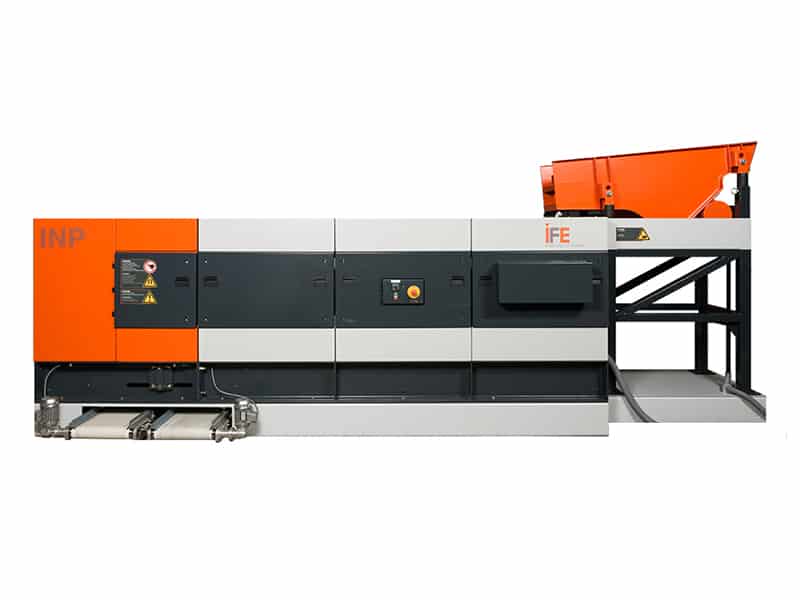
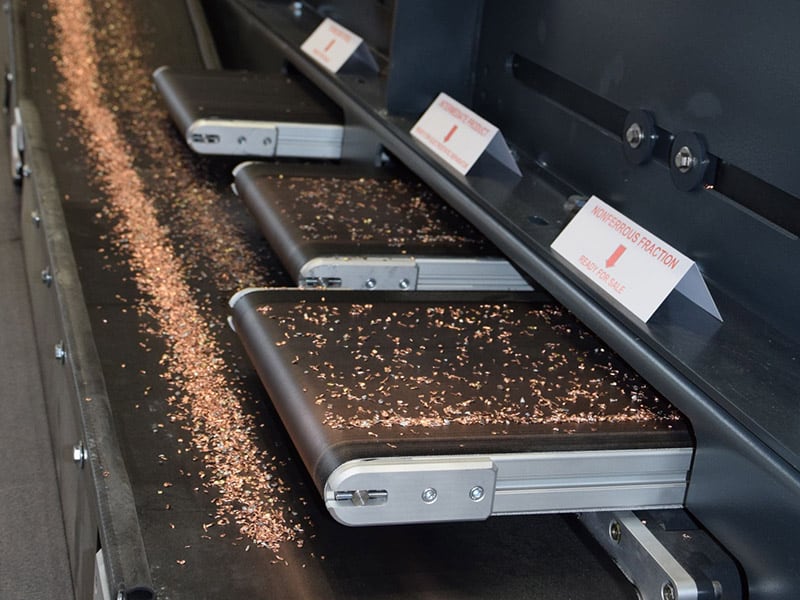

Magnetic Separation

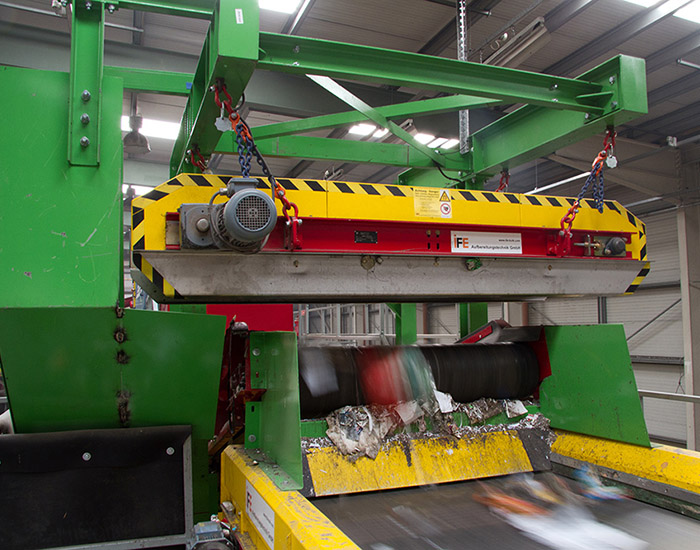
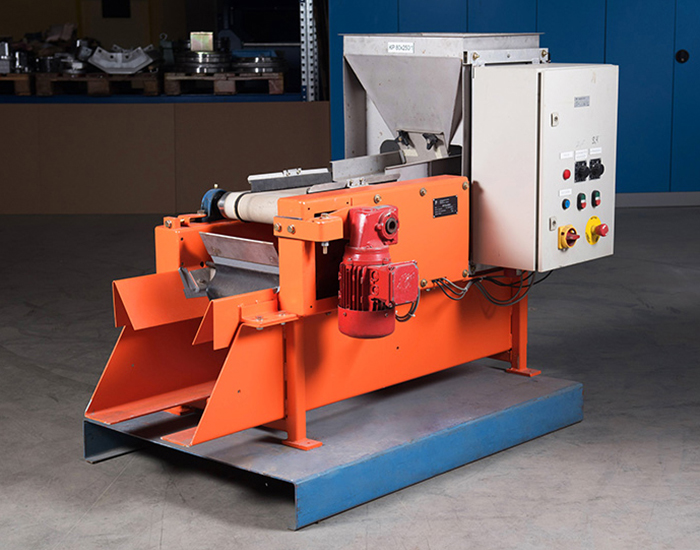
EXAMPLE
Electromagnetic Overband Separator
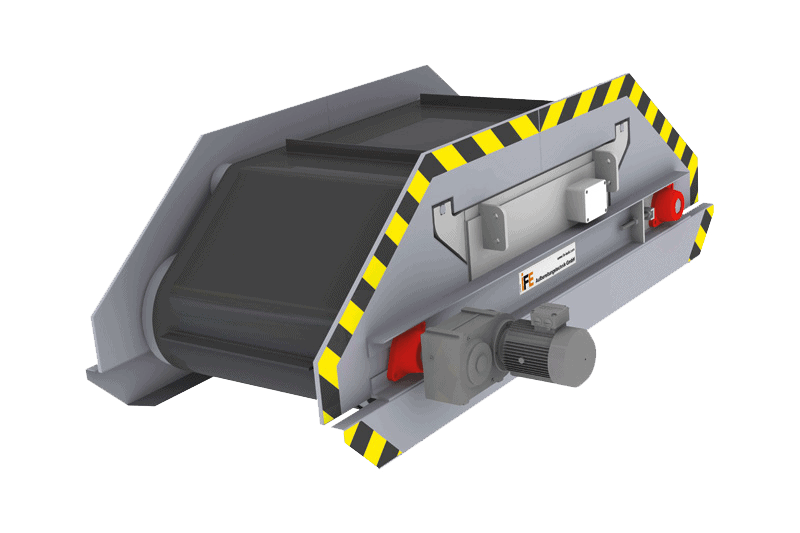
IFE electromagnetic overband separators are used to separate ferrous impurities from any kind of bulk material. They are used to recover magnetic particles from slag, household or industrial waste, foundry sand etc. and are utilized to protect crushers, belt conveyors, screens or grinders from metallic tramp particles. When a large volume of tramp iron is expected, a self-cleaning type separator will be more economical than a simple suspended magnet which is sufficient for small quantities.
Electromagnetic overband separators are recommended when strong magnetic fields are needed or arrangement of equipment only allows for high clearance distances.
Advantages
- powerful magnetic force with low energy consumption
- oil-cooled coil providing best heat dissipation allows for compact design
- deep magnetic field
- easy cleaning due to defeatable magnetic field
- available with or without extracting belt (automatic or manual cleaning)
- options available to suit a variety of applications
ATEX-Design
(Explosion Proof)
All electromagnetic overband separators are available in ATEX-design.
The separator is equipped with an antistatic extraction belt with rubber cleats for this type of application. Proper operation is maintained with a speed sensor; the temperature of the magnetic is surveyed with a thermistor allowing for switch-off in case of unsafe conditions.
This prevents ignition due to high surface temperatures.
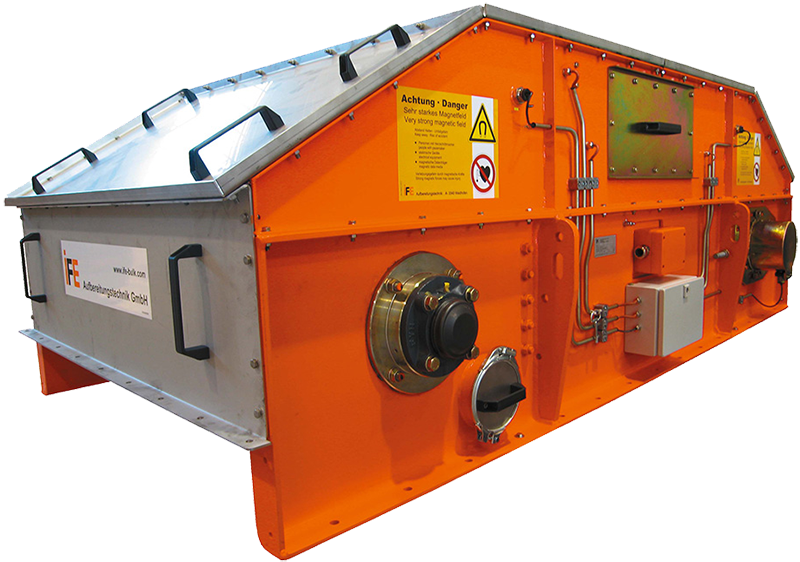
Screen Separation
Hydrostatic Screen
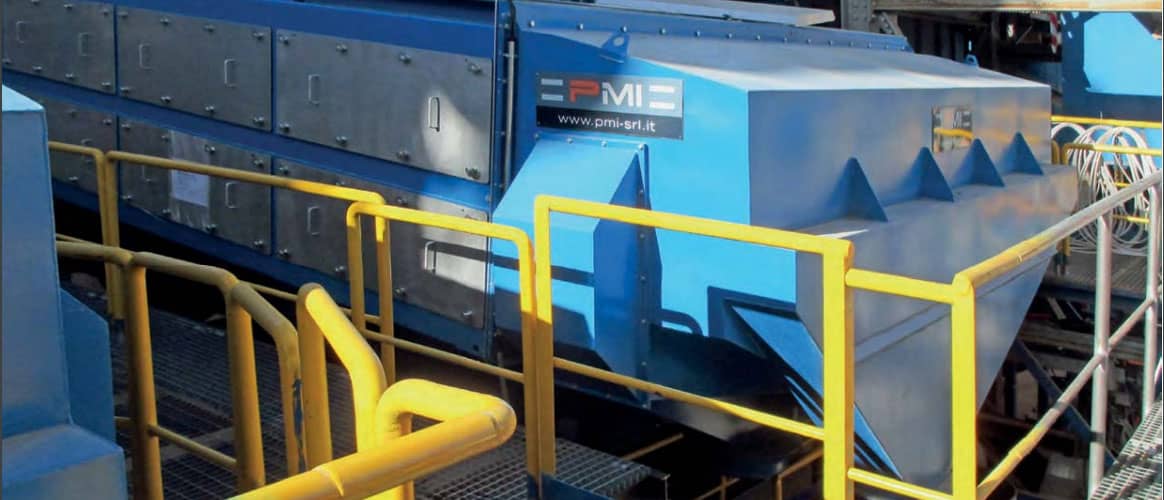
Technical Features
- Completely innovative, light and modular construction
- System of hydraulic suspension and low friction coefficient for the screen housing support
- Upper and lower balancers with rotating counterweight that provides the structure only with a rotating motion and eliminates any “pitching” problems
- Controlled and adjustable rotary movement of the screen housing
- The machine can have one or two screening stages, each containing up to 4 sieve lines
- From 2 to 5 fractions of sieved material are obtainable
- The sieves are made from stainless steel
- Flexible charging and discharging hoses on the storage hoppers for connection to the related conveyors outside the sieve
- In the sieve holder there are no fire and explosion ignition sources.
Benefits
- Unusual or special conveyors are not required
- The hydrostatic suspensions are more durable, efficient and cheaper than traditional systems with elastic parts
- Very low maintenance costs Minimum installed power loading
- Light foundations required
- Very high screening performance thanks to the high rotation speed
- Simple and rapid replacement of sieves.
Screen Separation
Linear motion vibrating screen
tailor-made for all applications
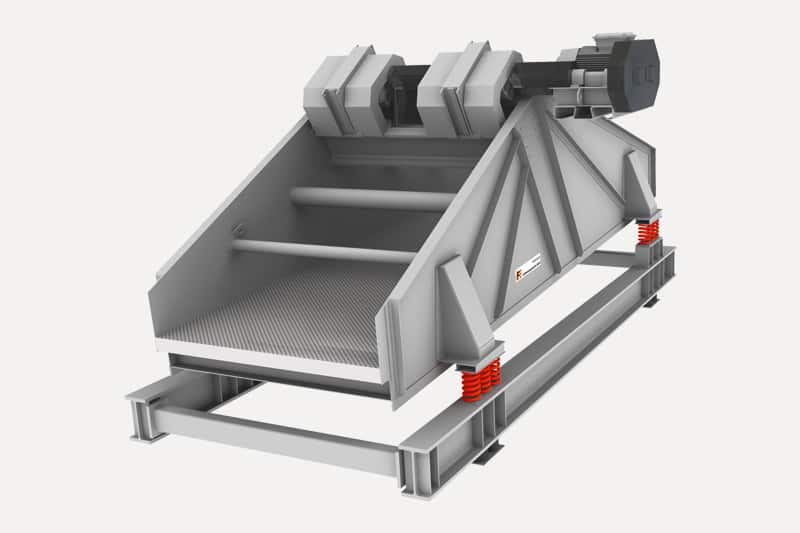
IFE linear motion vibrating screens are used for screening of granulous bulk material. The robust screen frame is manufactured, depending on the application, either in welded or in bolted and glued design. These screens can be driven by one or several IFE exciter drives or by a pair of IFE unbalanced motors. IFE linear motion vibrating screens can be equipped with all different kinds of screen mats available on the market. The minimized height of the screen allows for installation in restricted space.
Advantages
- high specific feed rate
- very robust design
- tailor-made for broad variety of applications
- maximized acceleration, also for large size machines
- all screen systems available can be used
- optimized drive concept
- high availability
- Optical Separation

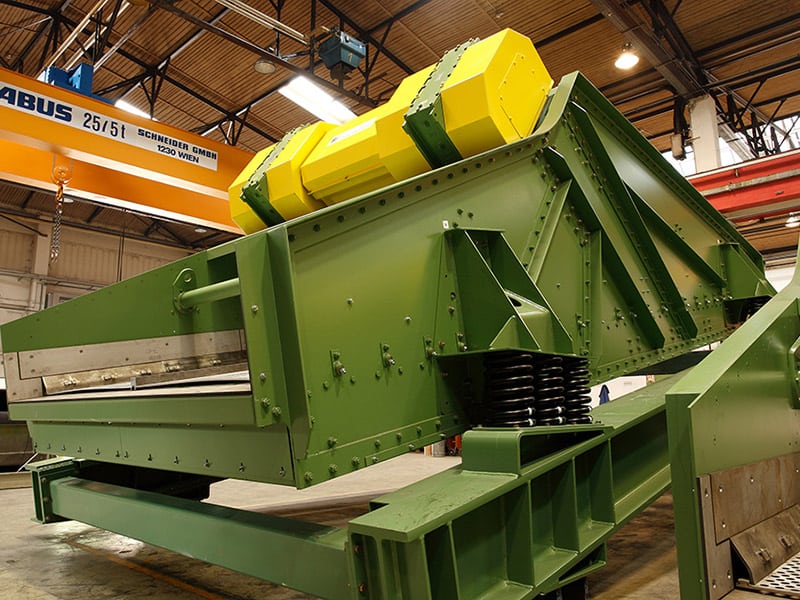
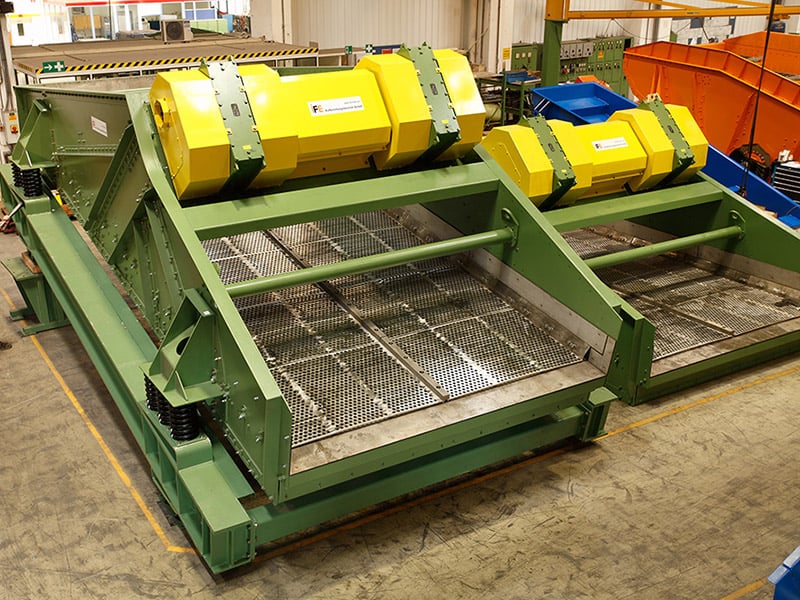
Air Separation
WESTERIA® WINDSIFTER AirStar®
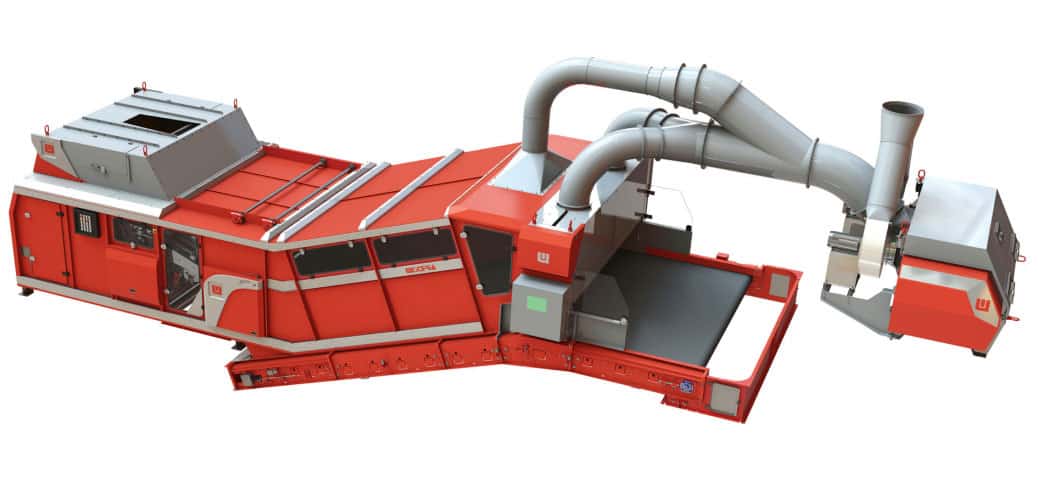
The windsifters from Westeria® are designed to be rugged, powerful and energy-efficient.
A powerful method to separate heavy and light materials is what sets the patented Westeria® windsifter technology apart.
In the windsifter, the materials are separated by a process that is divided into three main components: the acceleration belt, the air jet and the windsifter separation drum.
With its uniform and single-layer distribution of the input material, which is distributed homogeneously across the entire width of the windsifter and fed to the feeding belt, the windsifter achieves excellent separating results.
The material in the windsifter is accelerated to an adapted speed here and transported to the ejection edge. The materials falling from above get into an upcurrent that is generated through an adjustable air jet that is attached in the windsifter underneath the feeding belt.
The air stream meets the upper area of the rotation drum in the windsifter and is fed through it into the expansion chamber with the laminar flow.
The material in the windsifter meets the air flow and is separated into light and heavy materials.
The light materials are transported with an air flow with high speed into the expansion chamber, where the air speed is reduced so much that the light materials reach a container or a discharge belt. The heavy materials fall down from the rotation drum in the windsifter into a container or onto a discharge belt.
The air volume brought into the expansion chamber is removed again in the upper section of the windsifter and, depending on the individual application, is once more drawn in by the blower or routed into a filter system. To retain high-grade recycling raw materials, Westeria® has designed a special windsifter to unerringly sort the input material into three fractions with a high degree of selectivity.



